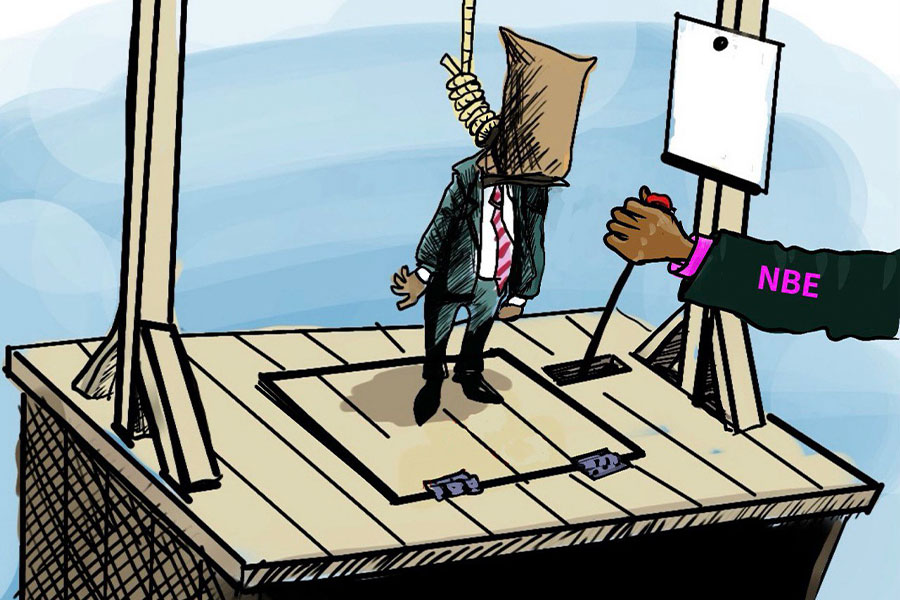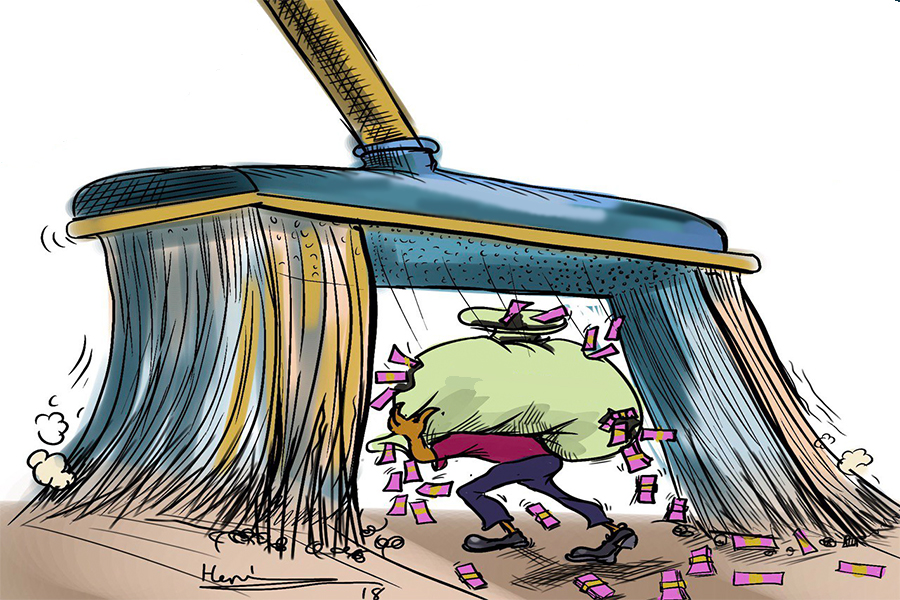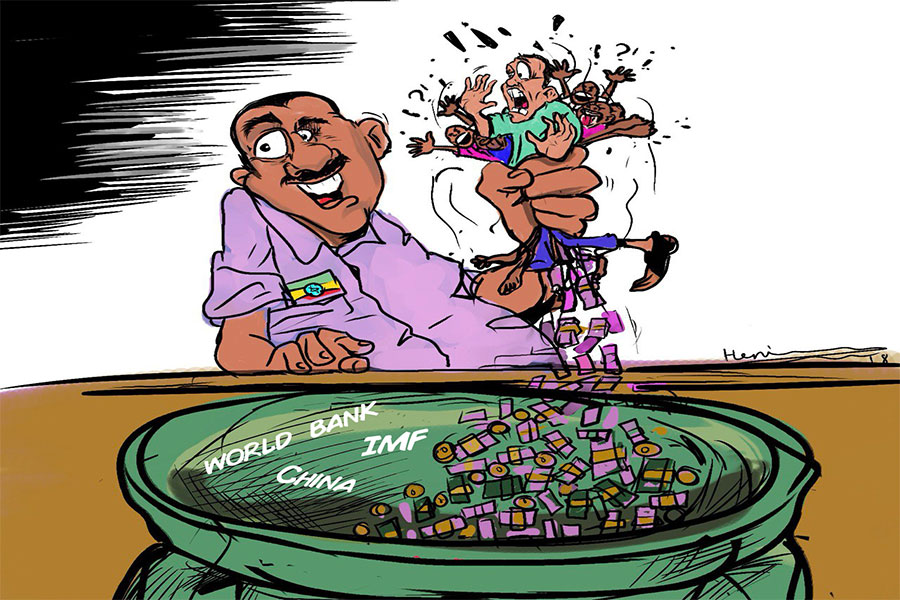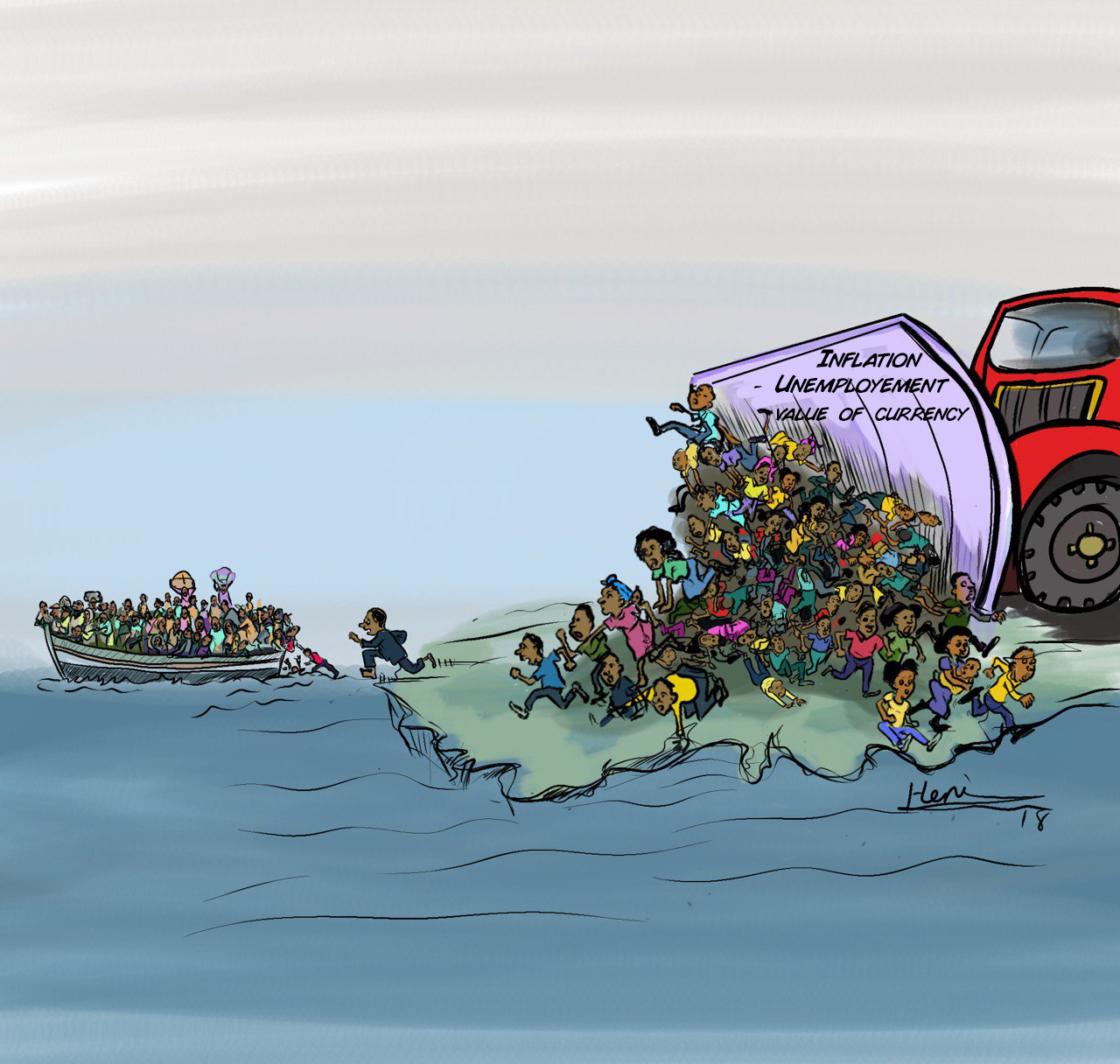
Photo Gallery | 180394 Views | May 06,2019
Sep 7 , 2025. By RUTH BERHANU ( FORTUNE STAFF WRITER )
For homeowners, the urge to refresh living spaces before the holidays is running headlong into a new economic reality. Inflation, import dependency, and shifting design trends are reshaping how families prepare for the season, with three-quarters now focusing their renovations on visible spaces, such as living rooms and porches, reports RUTH BERHANU, Fortune Staff Writer.
In her tiny one-bedroom condominium flat in the Qilinto neighbourhood, on the southern fringes of Addis Abeba, Mimi Alemu was listening to the far-off sound of construction work, thinking of her husband’s return. Elias Girma, a 40-year-old truck driver, spends most of his year hauling cargo across the harsh, sunburnt roads of Afar, coming home only for the major holidays.
For Mimi, this year’s New Year was special. She wanted their home to feel new, warm, and festive, something to make her husband smile when he finally walked through the door. She started with what felt like the easiest task. Painting the apartment cost her 3,000 Br for paint and another 3,000 Br for the labour, a reality of today’s prices that hit her.
“For a small space, I thought it would be cheap,” Mimi said, a mixture of surprise and resignation in her voice. “But with other holiday expenses, this feels costly.”
However, she pressed on, picking a warm cream colour for the living room to make it feel larger, and a soft mint green for the bedroom, hoping the gentle tone would make family moments feel calmer.
“When he walks in and sees the home glowing, it’ll be worth it,” she told Fortune.
Mimi’s story is echoed across Addis Abeba and beyond, as a wave of holiday renovations sweeps through homes each year, brushing up against rising prices and a changing market for home improvement and furniture. This time of year, there is an urgency to fix what is broken, brighten the faded, and give homes a touch of renewal before friends and relatives gather to mark the holiday. But the costs are adding up, driven by a tangle of local and global forces that push up the price of almost everything.
Paint, for one, is getting more expensive by the week.
“Imported inputs have become more expensive, and that affects everything,” said Anduamlak Demisse, manager of Harmony Paints & Chemicals Plc.
His company, which has been in business for eight years, sources inputs from domestic and international suppliers. Catalogue paints are available locally, but some key ingredients, like quartz and titanium, still come from abroad. Titanium in particular has become much costlier, pushing up the price of finished paint. At Harmony, a 16-litre bucket of white paint now sells for 2,800 Br, a single gallon goes for 750 Br, and a 25Kg bag of powdered quartz costs 1,300 Br.
To keep customers coming, the company has started offering a five percent holiday discount.
The season brings more business, too, for interior designers and contractors who help homeowners rush to complete renovations before guests arrive. According to Elshaday Tadesse, CEO and lead architect at Letarik Interiors, demand surges each year as families look to freshen up their homes for the holidays. Her company often launches promotional campaigns, including giveaways, to attract clients who are eager to complete their projects on time.
“Now people prefer classic and clean setups,” said Elshaday.
A shift in taste is marked by minimalism and functionality, replacing the lavish finishes that once defined a newly renovated home. But these new tastes come at a price.
Letarik Interiors charges 500 Br for a square metre for design work, and a complete makeover of a two-bedroom condominium starts at around 400,000 Br. Luxury designs can easily push a family’s budget to 600,000 Br or more. The cost of wood, ceramics, and other materials sometimes jumps 20pc to 30pc within a single month, making timing, and a bit of luck, crucial.
Eyob Fikiru, founder of Sebez Interior Design, also sees a rush of clients each season, balancing their desires for both affordability and style.
“People usually come to us a month before the holiday to get their designs done,” he said.
Design trends are shifting beyond paints. Lighting and wood accents have become particularly popular, with aluminium lighting fixtures in high demand and gypsum board installations still a staple in many homes.
“In the past, people liked patterned wall paints and elaborate ceiling shapes,” Eyob said. “Now, they prefer flat walls, smooth ceilings, and simple but modern furniture.”
Even basic construction materials are more expensive than before. Two main types of gypsum boards are available in the domestic market. Prefabricated boards cost about 35,000 Br a square metre, including labour, and on-site fabricated boards, which are cheaper at around 850 Br a square metre, but take up to three weeks to dry. Most clients choose the latter for its affordability, since the finish is the same.
“Last month, this price was 700 Br,” Eyob recalled.
Labour for gypsum work runs between 1,500 Br and 2,000 Br a day, another line item that grows with every project. Ceramic tiles, a fixture of holiday renovations, now sell for about 1,300 Br a square metre. Tiling the floors of a two-bedroom condominium can cost up to 150,000 Br, and adding electric board lighting can push expenses to 350,000 Br. Design fees range from 250 Br to 300 Br a square metre, but smaller spaces often end up costing more per unit area.
While many renovations are about making a home feel new, others carry a deeper sense of obligation. When Naod Birke, a 40-year-old contractor, walked into his childhood house near Sarbet, he was struck by how time had left its mark. His mother, Tsedale Hile, was now 80 and had spent more than 50 years raising a family inside its mud walls, but the house was falling apart. Cracks etched their way up the walls, mice scurried beneath old timber floors, and cold air crept through the gaps at night.
“I couldn’t let her last years be spent in a place that felt broken,” Naod said quietly. “She deserved more than survival. She deserved comfort.”
Naod spent four months working on the house, determined to give his mother a better place to live. The old mud walls were replaced with smooth plaster and glossy ceramic tiles, at 1,200 Br a square metre. They replaced the tired wooden floors and four buckets of 16-litre white paint, costing a total of 11,200 Br, covering years of stains. Warm spotlights, which cost 7,000 Br, gave the rooms a gentle glow.
Labour for four skilled workers set him back 1,000 Br a day, and a plush new sofa worth 120,000 Br took pride of place in the living room. But the biggest slice of the budget, approaching one million Birr in total, went into cement, sand, and gravel.
“This house gave us life,” Naod said. “Now it was my turn to give life back to it, and to her.”
These types of holiday renovations have an impact that extends well beyond individual families. They drive a seasonal boom in the furniture market, with shops and factories racing to meet demand in the weeks before a holiday.
According to Dereje Tekle, head of marketing at Zefmesh Furniture in the Megenagna area, the shopping pattern is predictable. At first, customers buy large items like sofas and dining tables, but as the day draws closer, they switch to smaller things like TV stands. But prices have soared, with some pieces costing 50pc to 100pc more than last year. Locally made coaches at Zefmesh now start at 48,000 Br, and imported luxury sets can go as high as 1.2 million Br.
To attract buyers, the company offers discounts of 10pc to 30pc during its busiest periods.
Yet, even with the rush, not all news is good for furniture sellers. At Tecno Style Furniture, a veteran in the business with 30 years in the market, sales have dropped almost 60pc compared to last year. The company's Project Manager, Wondimagegn Guta, blamed the slump on soaring costs. Today, inputs make up as much as 60pc of the final price of furniture. The company’s plant in Legetafo employs more than 450 workers, producing everything from sofas and beds to desks and mattresses, blending local wood with imported chemicals, springs, and upholstery to meet European standards.
Sofas at Tecno Style range between 85,000 Br and 400,000 Br, while beds go from 45,000 Br to 84,000 Br. Seasonal discounts of 10pc to 20pc are offered, especially to customers who buy both a bed and a sofa. The business tries to keep quality high, relying on local craftsmanship and imported components, but keeping up with the cost of materials is a constant struggle.
Royal Furniture, a relatively newcomer, has also felt the seasonal demand, along with the pressures that come with it. Incorporated in 2005 as a foam producer, the company only began manufacturing furniture in 2021, after years of importing ready-made items. With a plant in Menagesha, Royal now makes sofas, beds, and wardrobes using a mix of imported materials and local wood.
“Our strategy is diversity,” said Solomon Haile, marketing manager. “We want to meet the needs of every household.”
Royal’s prices illustrate this diversity. Beds run from 24,899 Br to 65,900 Br, sofas from 35,000 Br to 155,000 Br, and dining tables with six chairs cost between 65,000 Br and 110,000 Br. Coffee tables sell for 5,500 Br to 16,700 Br, wardrobes are 13,900 Br a square metre, and kitchen cabinets are 12,000 Br a square metre. Foam, still a core product, is used for pillows priced at 600 Br and premium bonded foam at 23,650 Br.
Imported inputs have increased by 25pc to 50pc, and the overall price of materials is up by 15pc to 35pc. Despite the higher costs, Solomon saw demand surge in the lead-up to the New Year, especially for high-ticket items, and holiday discounts can be as much as 30pc.
“People want their homes to feel renewed for the holiday,” Solomon said. “That desire drives the industry, even when costs are rising.”
Behind the scenes, the furniture and home improvement sector is wrestling with more than market demand and price hikes. Industry representatives complain of being hamstrung by tax rules that classify imported materials as finished goods, making them more expensive.
Leaders of the Ethiopian Furniture Manufacturers Association argue that "import substitutes should be treated like exports in terms of policy.”
After years of lobbying, a government committee recently recommended reducing tariffs by 10 percentage points to 25pc, but industry leaders demand more sweeping changes. The Association is pushing for low-interest loans to help local producers compete.
Officials say they are listening. Tilahun Abay, who leads Strategic Affairs at the Ministry of Industry, acknowledged the sector’s struggles, promising that steps are being taken to make things better. The government has pledged to buy all furniture for federal and regional offices from local producers and is organising holiday bazaars to help manufacturers reach buyers more directly.
“Since furniture and paint manufacturers add value, we ensure they’re not treated like importers of final goods,” Tilahun said.
Beyond these short-term fixes, the Ministry has drafted a 10-year development strategy to turn the furniture sector into a globally competitive industry by 2034. The plan identified shortages of raw materials, outdated technology, a lack of skilled labour, and fragmented policies as barriers to domestic production and the widening of the trade deficit. The idea is to replace imports with homemade products, reduce reliance on foreign suppliers, and retain more value within the country.
Implementation will commence in the next fiscal year, with officials from the Ministry of Industry promising broad consultations with stakeholders, including manufacturers and banks, as well as annual progress checks.
Yohannes Mekonen, a senior architect and university lecturer, believes the high cost of home renovation is the result of international trends and local economics. Tax policy, foreign exchange shortages, and dependence on imported finishing materials all play a role in driving prices up.
“The world evolves, and so does design,” Yohannes said.
He sees a steady move toward contemporary styles, clean lines, bright colours, multi-purpose rooms, and even tempered glass replacing traditional doors. Yet, he observed that practical matters usually prevail. Older kebele-owned houses, built from mud during the imperial era, are often so fragile that fixing them without causing damage is both expensive and risky.
Money, of course, shapes what gets done. According to Yohannes, about three-quarters of homeowners focus their renovations on the parts of the house guests see most, such as the living room and porch, while bedrooms and bathrooms are often left for later. Trends, he warns, can also hide future headaches. Wallpaper, for instance, was all the rage five or six years ago, but if it tears, finding the same pattern is nearly impossible, and homeowners are forced to redo entire rooms.
PUBLISHED ON
Sep 07,2025 [ VOL
26 , NO
1323]

Photo Gallery | 180394 Views | May 06,2019

Photo Gallery | 170596 Views | Apr 26,2019

Photo Gallery | 161637 Views | Oct 06,2021

My Opinion | 137278 Views | Aug 14,2021

Nov 1 , 2025
The National Bank of Ethiopia (NBE) issued a statement two weeks ago that appeared to...

Oct 25 , 2025
The regulatory machinery is on overdrive. In only two years, no fewer than 35 new pro...

Oct 18 , 2025
The political establishment, notably the ruling party and its top brass, has become p...

Oct 11 , 2025
Ladislas Farago, a roving Associated Press (AP) correspondent, arrived in Ethiopia in...